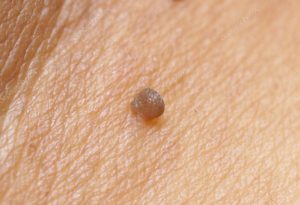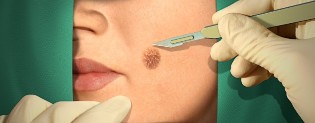
Many infections do not cause symptoms in healthy people. The immune system inhibits the activity of the virus, resulting in human is the bearer of an infection. During the transmission of the pathogen to other people, even in the case of a full clinical well-being, as the viral particles contained in the biological fluids of a patient. Hidden in the infection can be the main important cause of the spread of the disease: the patients in a timely manner do not pass the survey and continue to infect others irresponsible.
The human papilloma virus (HPV) can be an excellent example of hidden, of an infectious agent. Most people who contract at least one type of HPV during a lifetime, but the clinical manifestations of the disease occur not in all cases. To the confines of the complications of the infection, the doctors include an increased risk of formation of a malignant tumor. In patients with immunodeficiency, is often raised is the negative consequence of the disease. News the drugs help suppress the symptoms of the infection by HPV. Also recommended the vaccination in a timely manner.
More info on the disease
The human papilloma virus is the causative agent of the infection that attacks the skin and mucous membranes of organs. The main manifestation of the disease is the growth of the institute in the area of the face, the genital organs of the mouth and throat. In some cases, the gables of human papillomavirus (hpv) are formed in places non-specific, such as the skin of the upper and lower limbs. The location of the wart depends on the type of HPV. Most people the infection leads to scenic beauty the transmission of infection, but with a reduced immunity, the virus begins to show its virulence. In some cases, immunocompetent cells self-destroy the pathogen within a period of 3 to 6 months after its invasion in the body.
HPV infection is the most common sexually transmitted diseases. This figure can be explained virulent of the virus and asymptomatic over of the pathology of most people. The use of condoms is not always helps to avoid the infection, and therefore, the patient may continue to transmit the virus even if protected sex. At the same time, the specialists have developed an effective vaccine to prevent the development of the oncogenic form of HPV. The vaccination shows the girls in adolescence, such as the protection against the virus, you have to plant before the first sexual contact.
Characteristics of the virus
The human papilloma virus is a DNA containing a pathogen. Unlike bacteria and other micro-organisms, viruses can exert their activity only after the introduction into the cell, and the incorporation of genetic information in the nucleus. After that, affected by the cell begins to synthesize proteins necessary for the assembly of the viral particles. Almost all the representatives of the family papillomavirusov attack a single type of organisms, of which HPV infection can occur only for the man.
Scientists know more than 600 strains (types) of human papillomavirus (hpv), differing in genetic information. 40 types of HPV that cause the different forms of lesions of the mucous membranes and the skin. In this important clinical significance classification of the degree of oncogenetic strains. Thus, cancer of the cervix in women is most likely to occur during the invasion of HPV 16 and 18 types. These infectious agents are not always the changes.
The HPV-inch basal layer of the epithelium. The pathogen can exist in the form of episome, no connection with the cellular DNA, or an integrated form, associated with the genome of the cell. It is integrated, the virus produces proteins and causes the clinical manifestations of the disease. The livelihoods of HPV in the body is not the cause of a malignant tumor of the renaissance of tissue, but a carrier of the virus increases the risk of cancer risk factors.
Methods of infection
The virus is contained in the basal cells of the epithelium, so that the microtrauma of the skin and mucous membranes increases the risk of infection. In most cases, HPV is transmitted during vaginal, anal or oral sexual contact. The condom, it is possible to secure only a portion of the surface of the skin, but the viral particles can still enter the body through the other covers. The presence of genital warts predispose to the transmission of the pathogen, but apparently intact leather support of the disease is also a source of HPV.
Other modes of transmission
- The infection of the child during birth. In children, the more often lesions of the respiratory tract
- Independent of the migration of the virus with a portion of the body of the other
- The general use of personal care products, including razors, toothbrushes and towels
- The transfusion of blood. Recent studies have confirmed the possibility of the transfusion of the infection.
- Surgical procedures in terms of non-sterile
In spite of the various causes virus invasion, only the sex is the means of contracting HPV is of clinical significance. Other sources of infection are characterized by a low risk of spread of the pathogen.
Risk factors
In the more immediate, the transmission routes of HPV, you must also take into account the role of risk factors. It is one of the peculiarities of the mode of life of man and of certain physical states.
The main risk factors for infection
- A large number of sexual partners. Even if the sexuality without risk active sex life, sooner or later leads to infection.
- The age. Genital warts in most cases are found among adolescents and young patients, and condylomata of the oral cavity and respiratory system are typical for children.
- The immune system is weakened. Patients with HIV infection or acquired immunodeficiency, risk of infestation of the virus. HPV is most often manifest symptoms after organ transplantation.
- The damage of the skin and mucous membranes. Microtrauma facilitate the penetration of the virus into the basal layer of the epithelium.
- Smoking and alcoholism. Bad habits weaken the activity of the immunity.
- Urinary tract infection.
In addition, the group of risk of infection includes pregnant women. It must be remembered that the factors of predisposition to the disease is an effective prevention tactic.

Clinical
The incubation period preceding symptomatic manifestations of the disease can last months or not. I immune patients during this time, the body can destroy the infection, but spontaneous elimination of the pathogen is not always the case. A person can be infected with multiple strains of virus. The signs of HPV infection occur when the impact of unfavorable factors, debilitating the immune protection of tissues. Due to the recurrence of common condyloma periodically disappear, and form again. Complications of the infection can develop for several tens of years.
The possible consequences of the disease:
- Cancer of the cervix is a malignant tumor of the epithelial tissue. This type of cancer only associated with the human papilloma virus. The time of vaccination to the risk of carcinogenesis decreases.
- Squamous cell carcinoma of the anus. This complication can occur in men and women. Early symptoms of anal cancer include bleeding and itching of the skin.
- A violation of urination due to obstruction of the urethra the warts.
- The malignancy of the renaissance of warts in the area of the throat and mouth.
Cancer of the cervix is one of the most frequent causes of death among women. Since this disease is related to virus infestation, you must regularly the passage of the investigations to the gynecologist. Modern vaccines protect women from most types of oncogenic HPV.
The diagnosis
The survey condylomata are the gynecologists, urologists, venereologists and dermatologists. At a first host, the doctor will ask for a password and transfer the patient on the complaints, will collect data anamnestiques and will carry out the inspection of the skin and entities. Usually, the manifestations of HPV are easily identifiable, but it is necessary to exclude other diseases. To do this, the specialist will prescribe the instrument and research laboratories.
Methods of diagnosis:
- Instrumental inspection of the vagina and of the cervix (colposcopy). This study is necessarily carried out for the critical examination of cervical cancer. During the examination, the doctor can detect multiple human papillomavirus and areas of epithelial dysplasia.
- Biopsy – obtaining a cloth material in the area of the skin or mucous membrane changes. The cytology of the sample allows to identify the malignant cells.
- Polymerase chain reaction – particle detection of HPV virus in the body. This test gives the physician the possibility to determine the strain of the pathogen, and the viral load.
- Digene-test-accuracy detection of the DNA of oncogenic strains of the human papilloma virus. The research is used as a reliable source of screening.
The drug treatment
Designed by of drugs against HPV infection can only eliminate the symptoms of the disease and prevent the malignancy of the tissue. Complete elimination of the virus by using a drug treatment is not possible. Oral and topical funds are allocated in the case of a high risk of carcinogenesis, immunodeficiency and other bad state. If the virus does not manifest itself by external changes, rather the measures of prevention general.
The possible roles
- Salicylic acid to remove warts. Is not used for the treatment of the skin of the face and genitals.
- Creams and ointments containing immune to the tool.
- Podofilox – ointment, that have cytotoxic action. Application of the medication on the skin leads to the destruction of pathogens.
- Trihloruksusnaya acid chemical cautery, common and genital warts. Can cause of the local section of express.
The drugs listed you must use only under medical supervision. After the elimination of the warts, HPV infection can recur and even spread to other areas.
The surgical treatment

The doctor may suggest the patient to surgery and minimally invasive ways to remove warts. Generally, these methods are not complications, but in the first days after surgery may occur bleeding of the tissues.
Types of intervention:
- normal surgical excision;
- the freezing liquid nitrogen with a follow-up to the destruction of the affected tissue;
- electric coagulation;
- the removal of papillom with the aid of a laser.;
- the use of radio waves to "knife".
All procedures are performed under local anesthesia. Specialist will choose the most secure method of treatment of genital warts.
Forecast
The course of hpv infection depends on the immune status of the patient and the strain of the virus. Approximately 30% of the population occurs in spontaneous elimination of the pathogenic agent of the disease due to active immunity. In a manner symptomatic of the disease frequently occurs in pregnant women, children, the elderly, and immunocompromised patients.
For the infection by HPV is recurrent feature during. Formed the human papillomavirus (hpv) may gradually disappear or to be spread on the surrounding land of the skin. Oncogenic strains of the virus is most often strike the mucosa of the cervix, and the product epithelial dysplasia enhances the effect of the risk factors of malignancy of the renaissance of tissue, such as smoking and use of oral contraceptives. The tumor may form in 10 or 20 years after the invasion of the virus in the body.
Prevention
The most reliable method of prevention is vaccination. The vaccine "Gardasil", which includes viral proteins, and the components, which is effective against HPV 6, 11, 16 and 18 types. If the vaccination is at the age of first sexual intercourse, the risk of subsequent development of cervical cancer of the uterus in women does not exceed 1%.
More from prevention:
- the use of the condom;
- the sex only with partners;
- meticulous personal hygiene; and
- a pelvic examination at least once per year.
























